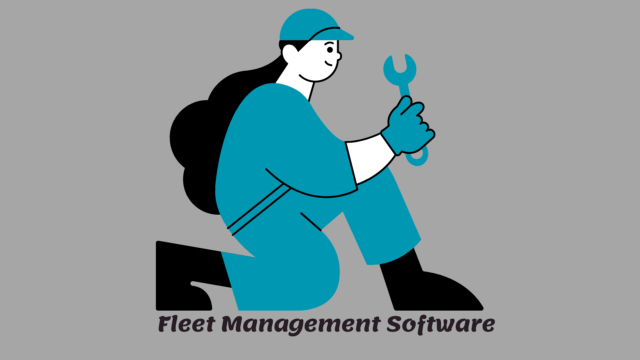Fleet management software is a crucial tool for businesses that operate a fleet of vehicles, such as trucks, cars, vans, or even ships. It helps streamline various tasks related to vehicle tracking, maintenance, fuel management, route optimization, and more. This guide will provide an overview of the best fleet management software, its key features, benefits, selection criteria, and some popular options on the market.
Introduction to Fleet Management Software:
It is a technology solution that helps businesses effectively manage their fleet of vehicles. It provides tools to monitor vehicle location, track driver behavior, manage maintenance schedules, optimize routes, and collect valuable data for analysis.

Benefits of Fleet Management Software:
- Improved Efficiency: Real-time tracking and route optimization tools help reduce unnecessary mileage and improve overall operational efficiency.
- Cost Savings: By optimizing routes, reducing fuel consumption, and efficiently managing maintenance, businesses can achieve significant cost savings.
- Compliance and Safety: They often include features that monitor driver behavior, helping businesses ensure compliance with regulations and improving overall safety.
- Enhanced Customer Service: Accurate tracking and estimated arrival times allow businesses to provide better customer service by keeping clients informed about the status of their deliveries.
Key Features of Fleet Management Software:
- GPS Tracking and Real-Time Monitoring: Provides real-time information on vehicle locations, allowing businesses to track vehicles, monitor routes, and respond to unexpected events.
- Vehicle Maintenance Management: Schedules and tracks maintenance tasks, reducing downtime and extending the lifespan of vehicles.
- Fuel Management: Monitors fuel consumption, detects inefficiencies, and helps manage fuel costs.
- Route Optimization and Planning: Calculates the most efficient routes, considering factors like traffic, weather, and delivery priorities.
- Driver Management: Monitors driver behavior, such as speeding or harsh braking, promoting safer driving practices.
- Reporting and Analytics: Generate reports and analyzes data to identify trends, make informed decisions, and optimize operations.
Factors to Consider When Choosing Fleet Management Software:
- Fleet Size and Complexity: Choose software that can handle your fleet’s size and complexity.
- Scalability: Ensure the software can grow with your business.
- Integration Capabilities: Check if the software can integrate with existing systems.
- User-Friendly Interface: A user-friendly interface simplifies adoption and reduces training time.
- Mobile Access: Mobile apps allow remote monitoring and management.
- Customer Support: Good customer support is crucial for troubleshooting and training.
Popular Fleet Management Software Solutions:
- Verizon Connect: Offers comprehensive fleet tracking, reporting, and maintenance management.
- Samsara: Provides real-time GPS tracking, route optimization, and driver safety monitoring.
- Geotab: Focuses on vehicle tracking, driver behavior analysis, and maintenance management.
- Fleet Complete: Offers end-to-end fleet management solutions, including ELD compliance.
- Teletrac Navman: Provides advanced GPS tracking, reporting, and compliance tools.
- KeepTruckin: Known for its electronic logging device (ELD) compliance solutions and fleet management features.
Implementation and Adoption:
- Data Migration: Ensure smooth data migration from existing systems to the new software.
- Training and Onboarding: Properly train employees to use the software effectively and maximize its benefits.
Future Trends in Fleet Management Software:
- Integration with IoT and Telematics: More integration with sensors and IoT devices for real-time data collection.
- Predictive Maintenance: Using data analytics to predict and prevent vehicle maintenance issues.
- Electric Vehicle Management: As electric vehicles become more common, fleet management software will need to support EV-specific features.
Conclusion:
It plays a pivotal role in optimizing fleet operations, reducing costs, enhancing safety, and improving customer service. By selecting the right software solution based on your business needs, you can streamline your fleet management processes and position your company for success in a competitive market.


